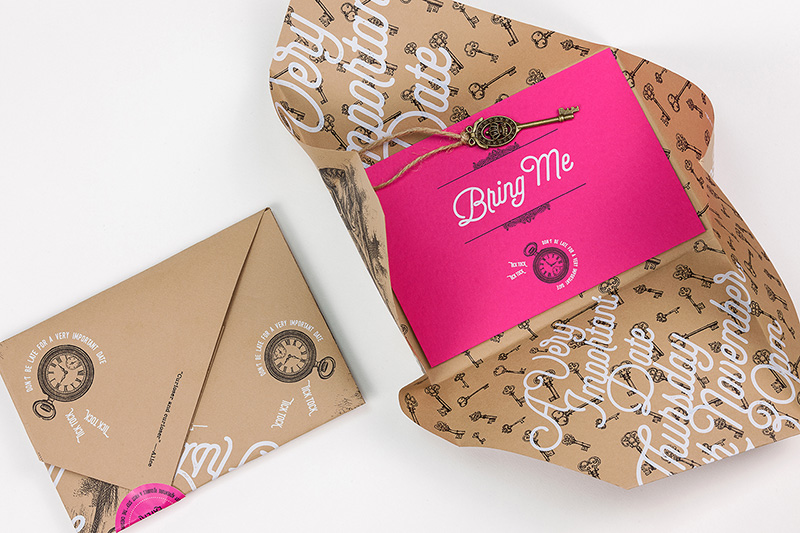
The CMYK printing process requires a white background if colours are to be represented accurately in the finished product. For this reason, the vast majority of print jobs involve printing on pure white or nearly pure white paper. This is fine, but what about all the visually stunning creative papers from the likes of GF Smith, Fedrigoni or the Curious range from Antalis?
The problem with printing on creative papers and plastics is that the underlying colour of the paper stock will alter the apparent colour of the ink that is laid on top of it. Yellow ink on blue paper will come out as a dark green. Blue ink on red paper will be close to black in appearance. This can make it difficult to predict how a particular print job will appear once it has been completed.
Some people choose to print CMYK inks directly onto coloured paper in order to achieve an artistic effect. This can sometimes work but will require lots of test attempts in order to ensure that the finished product looks the way it was intended. However, for anyone who wants to print accurate CMYK colours onto coloured paper, the only real solution is to lay a white underbase and then print the CMYK inks on top.
This process is commonly referred to as white underpin and is often employed by screen printers. Screen printing can be great but as you maybe aware it’s an expensive process, takes time and can be wasteful, especially if you require more than a few colours.
White ink can also look amazing just on it’s own. We produce work for some of the best Graphic Designers in the UK and have found a huge increase in the number of print jobs using White ink only on creative papers such as Colorpan from GF Smith. The key is to really show off the colour, quality and feel of the stock buy using the least amount of ink as possible.
At Ashwyk, we use the latest HP Indigo digital printing technology to create our printed products. This allows us to accurately print images on top of a white underbase on a wide range of coloured stocks, speciality papers and plastics.
It’s a real skill to get the perfect result. One shot technology is sometimes required whilst the number of hits of ink can change depending on image coverage and stock type. White ink is now an essential tool in the graphics art industry and Ashwyk have mastered how to do it perfectly.